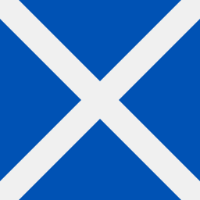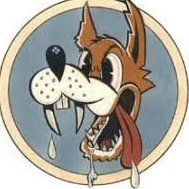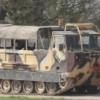Search the Community
Showing results for tags 'trumpeter'.
-
Next up is the story of Moritz. Better known as Sturer Emil or Selbstfahrlafette auf VK 30.01(H) Moritz was one of two Sturer Emils that were build and saw combat on the eastern front during the offensive to Stalingrad. Moritz claimed 22 kills before he was left behind by it's crew. The Russians claimed the vehicle and it exists to this day in the Kubinka tank museum. i bought the Trumpeter kit. The sprue count is low. Parts look crisp, little to no flash visible. I ordered 2 figures from Alpine to add to the model. Mainly to show the size of the Tank. This time i made shure i ordered the real ones 😉 So, i think this will be a fun project. No diorama this time. Maybe a simple base but nothing too fancy. Well, that's all the info and progress for now. If you want to tag along, go ahead. The more, the merrier. Cheers guys! 🍻🍻🍻
-
Trumpeter is to release a 1/48th Fairey Battle Mk.I kit - ref. 05831 Source: https://tieba.baidu.com/p/8249037080 V.P.
-
The aircraft novelties in the Trumpeter 2024-2025 catalogue Sources: https://tieba.baidu.com/p/8844047357 https://www.bilibili.com/video/BV1Ug4y1S7Sh/ New kits in this folder/catalogue, I mean not previously announced in red: (previous catalogue 2023-2024 - link) 1/24 - ref. 02419 - Focke-Wulf Fw.190A-8 Würger - (the 1/24th Fw.190 family is announced since 2006...) - ref. 02426 - Focke-Wulf Fw.190A-8 Würger - (the 1/24th Fw.190 family is announced since 2006...) - ref. 02427 - Republic P-47D Thunderbolt Razorback - thread - ref. 02428 - Republic P-47D Thunderbolt Bubbletop - thread - ref. 02428 - Republic P-47D Thunderbolt dorsal fin - thread - ref. 02428 - Republic P-47N Thunderbolt - thread 1/32 - ref. 03234 - Focke-Wulf Fw.190A-6 Würger - thread - ref. 03235 - Focke-Wulf Fw.190A-8 Würger - thread - ref. 03236 - Lockheed S-3B Viking - thread 1/48 - ref. 05823 - Fairey Fulmar Mk.II - thread - ref. 05831 - Fairey Battle Mk.I - thread - announced since 2023 - ref. 05832 - Ilyushin Il-2 Sturmovik - thread - announced since 2023 - ref. 05836 - Sukhoi Su-25 "Frogfoot-A" - thread - announced since 2023 1/72 - ref. 01641 - Grumman A-6E Intruder - thread - announced since 2013... - ref. 01642 - Grumman A-6E TRAM Intruder - thread - announced since 2013... - ref. 01643 - Grumman EA-6B Prowler - thread - announced since 2013... - ref. 01647 - Mikoyan Gurevich MiG-19PM "Farmer-E" - thread - announced since 2008... - ref. 01653 - Lockheed S-3B Viking - thread - announced since 2023 V.P.
-
Trumpeter is to release 1/24th Republic P-47 Thunderbolt kits: - ref. 02427 - Republic P-47D Thunderbolt Razorback - ref. 02428 - Republic P-47D Thunderbolt Bubbletop - ref. 02428 - Republic P-47D Thunderbolt dorsal fin - ref. 02428 - Republic P-47N Thunderbolt Source: https://www.bilibili.com/video/BV1Ug4y1S7Sh/ V.P.
- 6 replies
-
- 2
-

-
- P-47
- Thunderbolt
-
(and 1 more)
Tagged with:
-
Trumpeter is to release a 1/48th two seats MiG-21UM "Mongol-B" kit - ref. 02865 Source: http://tieba.baidu.com/p/2804557302 V.P.
-
This is a neat little kit. It has about 17 parts in a very oversized box, and it's quite expensive in the UK: I was inspired by this video of the 1/35th scale kit: ...to try to create a well-used agricultural tractor. Let's see how it goes. John
-
I have just finished a small Admiralty Steam Drifter (completed photos to follow), so its back to the RAF, and another stalwart from the early war period. I could build yet another Beaufighter, but the Wellington attracts as a good subject, with a kit in 1/48 that needs a tiny bit of work. The kit is, of course, Trumpeter’s 1/48 scale Wellington IC, first released in about 2006, and my chief reference, apart from what I will be able to find online, is the the very nice 4 plus monograph on the Wellington. I don’t promise a fast result with this build, as there are a number of things about the kit which need to be sorted out, and I will have some other things on the go while it is being built. But there is space on the workbench right at the moment, so I will try to get the difficult bits done before other projects intrude.
- 72 replies
-
- 4
-

-
- Wellington
- Trumpeter
-
(and 1 more)
Tagged with:
-
Hello there! Let me introduce you to my latest completed model from Trumpeter - the mighty Spiteful. The kit has many flaws and a few really serious problems too, which were discussed here before. I tried to cover most of them, but some were just really tricky to repair (eg. wheel bays or wing roots). I wanted to recreate the actual machine from the photos which I have, so please don't be taken aback with the surface finish - those prototypes and testing machines were really shiny and clean. I tried to recreate the oil leak from the engine on the starboard side of the fuselage and, of course, on the belly. The most difficult part were remaking of the canopy rim with the aluminium tape and reducing air intakes almost half of it's height. The airscrew is also adjusted to a better shape. Roundels are from Xtradecal and Tamiya acryl paints were used. Even though the kit is not perfect by far, I still quite enjoyed building it. I hope you'll like it. Thanks for watching! Cheers, Andrew
- 18 replies
-
- 67
-

-

-
Czech T-72M4CZ MBT 1:35 Trumpeter The T-72 on which this variant is based was a mainstay tank design of the former Soviet Union, designed to bear the brunt of fighting and being produced in volume in much the same manner as the T-34 of WWII. It has been upgraded extensively since its introduction in the 1970s, and in Czech service has been taken from the original M, M1 and M2 designation from former Czechoslovakia, to the M4 via an aborted M3 that didn't see service. In total thirty tanks have been upgraded with addition ERA explosive appliqué armour plus new forward facing blocks either side of the main gun, a new Firing Control System (FCS) and a powerful 1000hp engine and improved gearbox. Smoke dischargers are fixed to the turret, which overall has increased the vehicle's weight by some four tonnes. The Kit Although we've not yet reviewed any of this range of T-72s, they're turning into another of Trumpeter's comprehensive ranges of variants, with this being the third in the line. If you extrapolate this along the same lines as their T-62 range, which has eight kits so far, we're in for a fair few more! This variant is fairly niche, with only thirty examples converted from earlier M variants, but it is quite unusual in the looks department, with large ERA blocks sitting on the front of the turret, so it is well worth a look. It should also please the huge number of talented Czech modellers, as who wouldn't want a new and detailed model of your own country's armed forces? Due to the modular nature of these kits, if you already have another mark you'll probably recognise some of the sprues, as there is commonality across the range, although some of the common parts will be buried under layers of armour along the way. There are ten sprues in light grey styrene, two in similarly coloured flexible styrene, hull and turret parts in the same grey, plus seven sprues in brown containing the track links. A clear sprue, a ladder of poly-caps, a length of braided copper wire, a double sheet of Photo-Etch (PE) brass, decal sheet, plus the instruction booklet and separate colour painting guide round out the package, making for quite a full box, even after removal of the poly bags. As usual with Trumpeter AFV kits, detail is excellent, and use of slide-moulding has been made to improve this further, with the turret surface detail being particularly nicely done, having a restrained casting texture moulded into every facet. The lower hull is very highly detailed, as are the road wheels, of which there are plenty. Construction starts with these road wheels, as you might expect, with twelve pairs built up with a poly-cap in between. The same can be said for the two idler wheels, and the drive sprockets have a flat circular plate between the halves, plus the poly-cap that makes adding and removing wheels during construction so much easier. The idler wheel's axle and the final drive housing for the drive sprockets are added to the sides of the hull, as are the bearing points for the return rollers and a number of smaller suspension parts. The lower glacis skin is installed on the blank plate at the front, and additional mounting lugs are added for the self-entrenching dozer blade that is added later along with its actuating rams. The sides of the turret basket flare out at the top of the lower hull, and these are portrayed by a pair of curved armour panels, which have large fasteners moulded in. The suspension arms and dampers are added to keyed holes in the side of the hull, which obtains the correct ride-height for a stationery vehicle on flat ground, but if you are building for a diorama, you'll need to adjust this for any lumps or bumps on the surface. All the road wheels can then be added to be held in place by the friction-fit of the poly-caps, and removed at will during painting. The upper hull is moulded with a separate engine deck, and immediately has a raft of ERA blocks added to the glacis in front of the driver's central hatch, with more added either side for good measure. His hatch is made up from two parts, and is added along with the light clusters to the cut-outs in the ERA panel at the front, after which it is added to the lower hull. The rear bulkhead is built up separately with spare track links, towing lugs and two mounting tie-downs for an unditching log, which is made of flexible styrene, probably to ease removal from the moulds. It is lashed in place by a pair of PE tie-downs, or those same tie-downs can be left loose on the mounts if a log isn't being carried. This too is then added to the lower hull, held in the correct place by a pair of slots and lugs at the edges. The engine deck is then built up from a pair of panels, to which seven PE grille covers are added, along with other small parts. This is then dropped into the remaining hole in the upper deck to complete the main deck. The tracks are supplied on seven sprues of twenty-three links, and are the same as you will find in the T-62 boxes, as can be seen from the markings on the sprues. They have three attachment points that are all on the curved interlinking parts of the track, and once you get in the groove, they shouldn't take too long to prepare, as they don't have any ejector pin marks to worry about. Ninety five links per side are required, and can be glued in a run using liquid glue, then draped around the wheels while still soft, and held in place with tape and soft packing to obtain the correct shape. The ends of the track-pins are a little simplified, having no end-bolt heads within a cylindrical hole, but once they are muddied up, that should hardly notice. The tread pattern is spot-on however, although much of this will be lost during the aforementioned weathering. After the tracks are in place, the fenders and side-skirts can be built up. The main fender is a one-piece length that has a number of carriers added along its length, plus a pair of PE straps on the additional stowage that top the centre part of each track. The side-skirts are also one-piece, but have five rectangular ERA blocks and one triangular one, plus a few small PE parts added along the way. The port fender is slightly different, having the engine exhaust coming out over the top of the fender, breaking the run of stowage in two, and having a cover bridging the gap, and preventing the tankers from burning themselves on the hot exhaust. These are added to the sides of the hull with more PE straps, which are well-detailed and go together just like the real things. At the rear of the hull the two towing cables are made up from 80mm lengths of wire, and two towing eyes per cable, with a scrap diagram showing their correct fitting on the rear bulkhead. Work on the turret begins with the construction of the special forward facing ERA blocks that are ranked around the front of the turret either side of the main gun. There are five on the starboard and six on the port side, with additional standard box-shaped ERA blocks dotted around filling in gaps, and covering the roof. The main gun's fabric mantlet cover is portrayed by a flexible styrene part that has a small PE ring at the front, but make sure you choose the correct one, as there are three on the flexible sprues. Various sensors and targeting devices are added to the roof, along with the grenade launchers, which have been relocated to the roof due to the siting of the new ERA blocks. The bustle is built up around a large stowage box, which has two lids added and four ammo boxes on each side for the commander's machine gun. On top is a tubular container for wading gear, and the rear of the stowage area is detailed with a trio of closures, which have to be bent to shape to match the profile of the box. The commander's gun is well detailed with a slide-moulded flash-hider, a large ammo canister, and a thirteen part mount. The hatch is also made up from a substantial number of parts, so that it can hinge open and rotate if you are careful with the glue. A remote operation turret is added to the front of the cupola, and this has a clear part for the lens, as well as a PE part that is bent to fit. A side stowage bin and an angled PE rack are added between the appliqué armour and bustle, and the main sighting optics are installed on the roof in a box that will be familiar to anyone interested in modern MBTs. The barrel is produced in styrene, and the main part is split horizontally, which might induce a bit of moaning initially, but as it has a thermal jacket, this isn't really a problem, as the seams have been kept away from the joints, and the muzzle has been tooled as a separate part that gives the barrel a hollow tip. With this in place, the turret is finished, and the model is completed by dropping the turret into the turret ring, which in this case doesn't have the usual bayonet latching mechanism, so you'll need to either glue it down, or be careful when handling the completed model. Markings Only two markings options are supplied with the kit, with only one colour scheme between them, consisting of black, dark green and green camouflage. Vehicles 007 and 021 are depicted with Czech roundels on the turret sides, but three lines of 0-9 in white are included so that you can model any others if you wish. The decal sheet is simple, consisting almost completely of white markings, but the Czech roundel is in register, with just the hint of pixelation around the edges of the coloured portion that is only really visible on close inspection. Otherwise the decals are thin, appear to have good colour density, with a thin glossy carrier film. Conclusion Another Soviet era MBT that has been upgraded with the times, and survives in service today. Trumpeter excel at this type of subject, and this one is just more of the same, with lots of detail from the box, with more appeal due to the unusual ERA system and niche operator (in terms of numbers). Highly recommended and available from all good model shops now. Review sample courtesy of UK Distributors for
-
Hi guys, new on the bench, have times to build because of Corona Smerch Trumpeter with Meng resin wheels
-
Hi all! For this build I'm going large with Trumpeters 1/24 Fw 190D-9. I'd been umm-ing and ahh-ing about getting this kit then I saw one on display at the model show last weekend and it looked fantastic fully built and like I said in my K-4 post I'm very much into my late-war german aircraft at the minute. Upon opening the box I immediately realised I'm going to struggle to find somewhere to display this when I'm done, its some size- though it doesn't look any more complicated than my 32nd scale kits which is nice. I have the Red Fox Studio instrumental panels on the way and some Montex paint masks as I don't want to risk decals silvering on something this size, the scheme is 'Brown 10' of 7./JG26 flown by Waldemar Radener- I was able to find some useful drawings by Arkadiusz Wróbel. And some artwork I found on twitter posted by The Aviation Art of this Dora. Excited to start- thanks for looking in!
- 50 replies
-
- 12
-

-
PLAN Wuhan project 33G, 1/144 bit of a beast, the flood holes just had to be opened out, or did they LOL. Still going, one hull half done, half the other, mid casing started on one side other to do. Opened and glazed with kristal clear wheelhouse in the sail. Missile tubes done, building OOB with the exception of flood holes etc. All the best Chris
-
Blackbird Models is to release 1/32nd Douglas A-4B & A-4C Skyhawk conversion sets for the Trumpeter kit. Source: https://www.facebook.com/permalink.php?story_fbid=pfbid033AwVdJQKcj2Sv4eGG5MuR8kq5WgYcHD4gHM3FvreajTvZAicZBH2ZdZSu7Ssjuigl&id=100046220576815 parts V.P.
- 8 replies
-
- 1
-

-
- Trumpeter
- Blackbird Models
-
(and 1 more)
Tagged with:
-
In my eyes, the WZ-10 belongs in the top ten of Science Fiction looking hardware. This is the new Trumpeter 1/48 kit; the quality is overall excellent with an abundance of surface details and good fit. What started as straightforward OOB build got a bit bogged down when I stumbled upon a thread on SinoDefenceForum with an abundance of high resolution photos from every angle. In the end, I added only tiny details: Brake lines for the front legs, support struts for the wire cutters and the antenna along the spine. The rest of the detail work was all about painting & decal placement (the instructions are somewhat vague here). Some details were added in the cockpit, including pilots carved from Hasegawa Navy drivers. The main rotor head is slightly inaccurate, but once treated with painted details and a wash looks convincing enough. I think it is a french desing, so there might actually be aftermarket parts for it. The mechanism of the tail rotor is a simple disc, and I cut it into kind of an X-shape to bring it closer to the real thing. Paints are custom mixed Tamiya acrylics over a black base coat and Vallejo Metal Color. Thanks for watching & all the inspiration.
-
I have always been a sucker for WWII halftracks and soft skins ever since I returned to the hobby, with Axis vehicles being a particular favourite. Over the last couple of years I have built a fair few Sd.Kfz.7 8 ton variants. Dragon (D) and Trumpeter (T) are the only manufacturers to offer the vehicle in 1/35 scale and currently offer eleven different versions between them. At last count both manufacturers offer twenty-six kits with both producing early and late towing vehicles as well as Flak variants. Both offer the same models with the odd variant being produced by just one. Dragon also offers combo packs including artillery pieces. Gun crew vehicles are available in initial (D), early (D & T) and late (D & T) Wooden bodied (Holzpritsche) versions are offered by D & T Self-propelled Flak versions carried four main weapons. The early and later armoured cab model 7/1 version Flakvierling 38, (D & T), and the three 7/2 versions; early and late Flak 37 (D & T), early Flak 41 (T), and late Flak 43 (D & T) Two kits that only one manufacturer offer is Trumpeter‘s 7/3 Feuerleitpanzer version which was used specifically at Rocket sites and Dragon offer the specific 1943 HL m11 version of the gun crew vehicle. Cyber Hobby released an early Flakvierling 38 variant in 2011 but I have no idea if that differs from the Dragon boxed kit #6525 of the same name that was released in 2009. An early gun crew Sd.Kfz 7 in North Africa As regards to builders, both the main ones were Borgward (designated HL) and Krauss Maffei (designated KM). The radiator housings received their emblems on earlier vehicles. An early model Sd.Kfz 7/1 version Flakvierling 38 One variant that is missing from range in offer is the earliest incarnation of the wooden cargo bodied (Holzpritsche) These were first attached to the 1943 Typ HL m11 which retained the old-style metal driver’s compartment. The Holzpritche bodied vehicles were a solution to save on limited and dwindling Nazi supplies of raw materials. The first Holzpritsche vehicles built of the final m11 design were installed by the manufacturer Saurer as early as November 1943 and this is the vehicle I am planning to build at the end of this build log. Early Holzpritsche fitted to the Typ HL m11 With both Trumpeter and Dragon only offering the final versions of the Holzpritsche which included the revised and larger wooden cab I will likely have to combine elements of different kits. It would be made far simpler if just one manufacturer got things right, but alas, both do suffer from their own inaccuracies and issues. To this end I am going to first begin by building both the final Holzpritche versions to see what will work best. Once completed I will attempt to create the early version with the best of what both manufacturers can offer. First up is Trumpeters 2009 released kit # 01507 which they simply brand as a KM m11 ‘late version. Having built this kit quite a long time ago not long after I returned to the hobby, I recall a few concerns that made it a less than pleasurable build in places, so let’s do a quick recap before I start the build. The main spoiler concerns the sprockets. First up, they look a little odd. That is because they have bevelled groves on the main face which were never present. Trumpeter don’t even show them in their own painting guide or box art, so something was at odds! The biggest problem however is that building them up as per the instructions means the tracks will not fit over the sprocket without leaving a nasty gap. The kit’s engineering lacks the important drive sprocket teeth offset (seen on many German running gear designs) which prevents the track from sitting evenly around the sprocket. In addition, the part containing the outer roller detail once fitted is hidden on the reverse side! Trumpeter never designed the teeth offset of the rollers against each track pad as per the real thing, so the track links do not sit flush against each track pad. Each sprocket is also ‘handed’ so any surgery will require removing the same part from each sprocket then a test fitment of a small track run will then determine how you re-assemble each sprocket. The recommended surgery is not complex and TBH re-fitting the small tabs that require removal for the modification to work are not completely necessary. The sprocket modification explanation with pics can be found here: https://www.perthmilitarymodelling.com/reviews/vehicles/trumpeter/tr01523d04.htm If you want the sprocket to resemble the real thing aesthetically the groves will still need to be filled in, which will not be an easy task. Even then the track pad inner fitting plates and bolts are missing so for the ultimate authenticity an aftermarket photo etch set will still be required. Even better still, try and locate a 3D printed pair. The second biggest kit failing is the omission of the wooden equipment rack in the load area. Although the equipment rack was designed to be removeable to easily convert into a flatbed the rack is an important element of this variant so why it is missing is a mystery. Trumpeter do offer some additional internal planking, but it is totally inaccurate. They do however offer a nice tarp for both the cab and load area, so there is a ‘cover up’ alternative. Another distinct anomaly is the inclusion of a Flak variant cab bench. The bench did not have an angled cut out on the passenger side and the driver’s seat cushions were much deeper with a cut out in the horizontal framework to accommodate. The Panzer Tracts book quite clearly illustrates the correct layout which also shows a battery box instead of the two exposed batteries that the kit offers. Comparing the kit dimensionally with the Panzer Tracts book 22-4, the overall length is a smidgen long compared to the drawings and the profile of the front fenders is slightly out. Neither warrants the amount of work which would be required to correct IMO. So, with the major fitment issue, the missing part exposed and a dodgy cab seating arrangement, what else can we expect? The kit offers these licence plate decals Even if accuracy is not a major concern, then some ‘interesting’ engineering and odd step sequencing is still worth highlighting. The chassis engineering is overly complex so rather than a nice strong one piece moulding that all the Dragon 8t kits offer, a multipiece affair will need to be cleaned up and carefully aligned together. Personally, I believe this is the main issue with all the Trumpeter 8t kits. Too many parts when one or two would have been perfectly fine. I guess Trumpeter never embraced slide moulding technology like Dragon did! To complicate matters, the instructions have you add some of the smallest and most fragile parts in the very first steps! Considering the amount of handling still required this is a recipe for disaster. These are kit’s where the builder needs to plan ahead. Kit content and sprue shots. To save myself a whole bunch of work they are all conveniently available to view here: http://www.trumpeter-china.com/index.php?g=home&m=product&a=show&id=1250&l=en Compared to the Dragon versions the detail is a little ‘chunky’ in places and although there was no flash present there are a few pin holes, many of which will remain visible. There is also a fair bit of mould offset on many parts so seam clean-up will obliterate some detail. Along with the main problems already mentioned I will try and point out any further issues as I go along. The multi-part affair for the chassis is the same across all the Trumpeter kits with only minor differences across the variants. Whilst far more detailed than the Dragon equivalent it is a bit fiddly to assemble. Dragon kits sacrificed detail in this area but much of it is unseen once assembled and it is a much stronger sub assembly and saves at least a couple of hours of work. Following the instructions, we commence in step 1 with the gearbox. This is instructed to be fitted between the chassis legs. It is a heavy part and dangles between just one contact point on each side and does not actually provide any real structural rigidity. To make life easier it us far easier to construct the chassis components in step 2 with it left off. The flex in the chassis legs will accommodate it once the chassis frame is built up so let the assembly fully cure first. It is also recommended NOT to add the photo etch and plastic cab levers (parts D13, D38 and D54) until it is ready to receive the cab floor as they are easily damaged. The front leaf spring assembly connect the two chassis legs at the front and the flat rear tray (part WA15) connects them together at the rear. Part A41 shown in step 3 can be used in-between to aid alignment. The gearbox fits in-between, and it must sit perpendicular to the frame. It’s connection points to both chassis’ legs rely on just the tiny and imprecise ends of part A7. The weight of the gearbox tends to make it droop rearwards making both chassis legs in the middle bend inwards at the top! Not the best engineering as the gearbox needs to align in one direction to accept both winch and engine shaft in later steps! The only reference for lining up the gearbox straight is to sight it up using the two holes in the legs behind the sprocket housings. TBH the upper middle parts of both legs have way too much flex and don’t get any rigidity until the fuel tank in step 7 is attached. There’s plenty of manhandling beforehand so handle with care! Step 3 connects the myriad of parts that connects the suspension pick up points. Plenty of clean-up is needed especially on parts D23 and D24 so dry fitting everything before committing placement is recommended. There are also two small pieces of photoetch to add in this step and they need to be assembled correctly as the holes in them accept the winch housing. Progress to step 3 so far.
-
So the canopy that comes with the 1/48 is missing the central strut after some research it seems that the only mig-23 variant that has the canopy missing the central strut is the 23S which is an extremely early version, seems like trumpeter includes the correct canopy for all of their other 1/48 mig-23s but I couldn't find any of the other variants on sale without having to import from overseas. With only having the 23M as an option is there any (simple) way I could fix it so that it's the correct shape? Considered using 0.3mm styrene sheets or the left over material from photoetch. Did also try to see if I could find any aftermarkets that could fix the canopy but alas no results popped up.
-
Trumpeter is to release a 1/32nd Douglas TBD-1 Devastator kit in 2016-2017 2023 - ref. 02226 Source: http://www.themodellingnews.com/2015/12/trumpeter-catalogue-2016-2017-lets-see.html#more V.P.
- 20 replies
-
- Trumpeter
- Devastator
-
(and 1 more)
Tagged with:
-
Hi, On my shelf for a while now is trumpeters UH-34. I am not a helicopter expert, but I believe this is the same as an S-58. I gather you should be able to build this as an S-58 as used by the Netherlands Navy. At the time I tried to get the “DutchDecals” sheet, but it had sold out. Did find a set from a company previously unknown to me by the name of Heli Scale. I also ordered a rotor folding set from Scale warships Ltd. designed for use on the Italeri kit. It is actually for the Wessex and I am not sure if they share the same rotor head as on the S-58. However, hopefully I can make it work. The trumpeter kit does allow to fold the tail rotor at first glance, so I hope to display it as shown in the National Military Museum in Soesterberg, The Netherlands. Also plenty of reference material on the IPMS NL website: https://ipms.nl/artikelen/nedmil-luchtvaart/vliegtuigen-s/vliegtuigen-s-sikorsky-s58 That’s all, thanks for watching. Rgds, Rob
- 52 replies
-
- 15
-

-
Hello I managed to finalize one of my biggest project. Enjoy. Cheers
- 28 replies
-
- 56
-

-

-
After finishing my Tamiya Archer spg I have decided to come more up to date vehicle so enter the 1/35 Trumpeter AS90 self propelled gun. I found on that well known auction site this Trumpeter AS90 advertised as having been water damaged but complete so having decided to take a chance made a silly offer which was accepted. As the pictures show the box and instruction sheet are water damaged but functional, the parts are still in there bags as was the decal sheet to there shouldn't be any problems. Hoping to scratch the interior as in the past as I was involved with the base overhaul of the AS90 so time will tell if my memory is still any good. If you have an interest please feel free to tag along, this will not be a fast build and as always comments and information welcomed Thanks for stopping by your time is appreciated Stay safe Roger
-
Something really new in quarter scale as unexpected ! Trumpeter is to release in late June a 1/48th Mil Mi-4 "Hound" kit - ref. 05816 Source: http://www.trumpeter-china.com/index.php?g=home&m=article&a=show&id=232&l=en Box art V.P.
- 30 replies
-
- 12
-

-
Here I show the construction of my Bismarck model from the Trumpeter brand in the scale 1:200. The Pontos Detail Up Set “Advanced” is used for optimal detailing of the model. Various Veteran Models sets and all sorts of other aftermarket accessories do the rest. Not to mention a bunch of styrene profiles for scratch building and the famous leftovers box. I’m trying to create a model that shows the period from April 1941 to about 80% historically correct. I worked on the model for almost two and a half years and it was finished in October last year. I ended up here with you through a friend and will enter some pictures of the construction here during the days. This is the start The torso needs my attention first. Portholes have to be built up and the cooling water intakes have to be added. The original kit is missing the sacrificial anodes on the shaft pants. I had decided to apply the Baltik camouflage scheme. She simply looks her best this way. But I didn't know what work there would be on the superstructure. The wooden deck of Pontos simply looks authentic. Then comes the swastika in the aircraft identification, which is banned in Germany. Naturally painted, no decal. This way you can better see the grain of the wood. Then the first fine details of Pontos come onto the lower superstructure. A close-up of this fan shows the depth Pontos brings to the model. And the rear superstructure. And then the ship comes onto its final stand, as the superstructure is glued to the deck next. Camouflage stripes painted and on the deck. Now I continued at the bow and laid anchor. Note the double bridge chains. With an aftermarket product as expensive as Pontos', you'd think they'd be included. But far from it, only normal jewelry chains are included. At the end of the first part, my self-created paravans for the companionways. I made them out of diluted wood glue and tissue. Jölle
- 27 replies
-
- 10
-

















